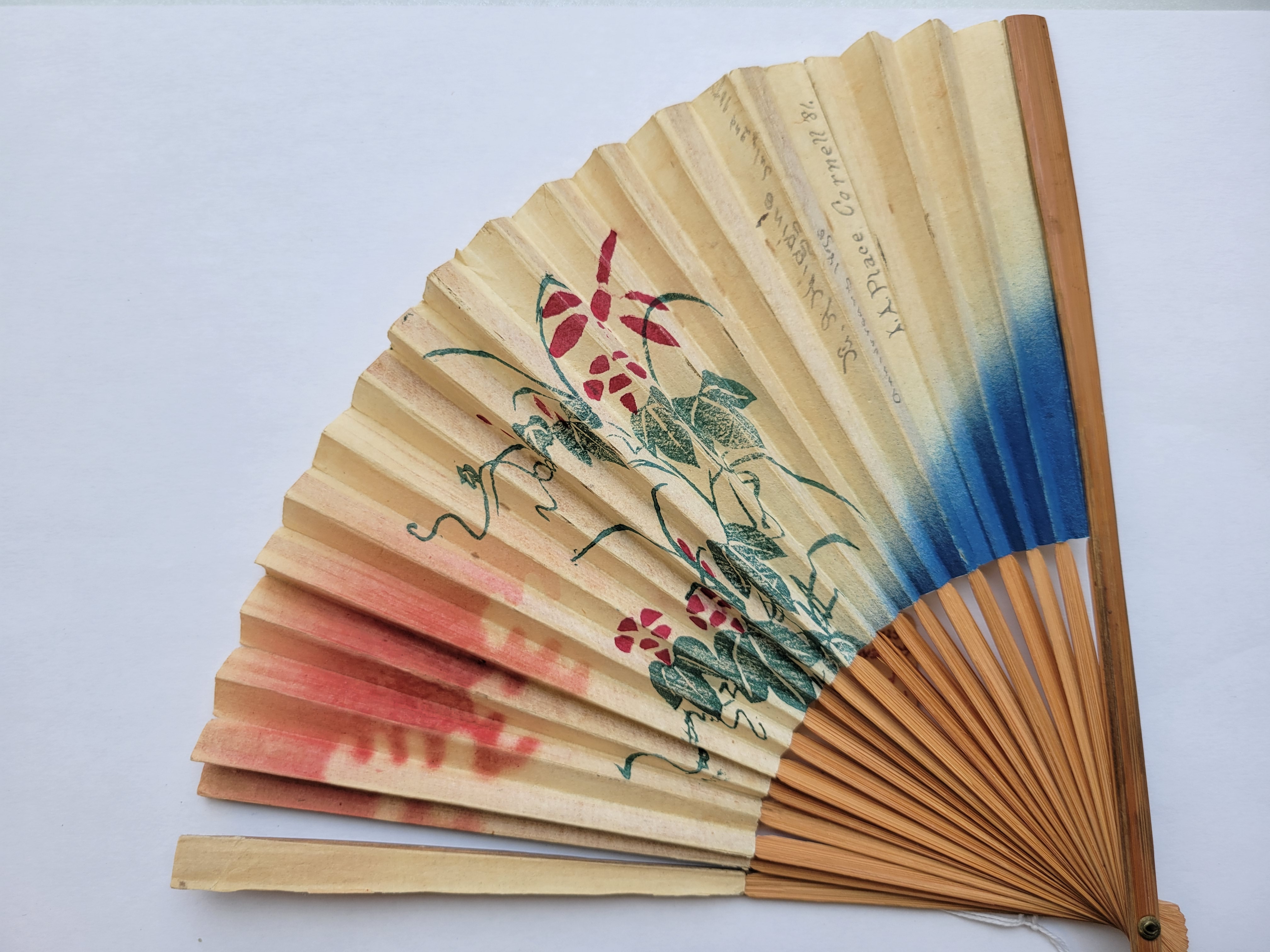
An interesting object in the collection is this folding fan made from wood and paper. On the front of the fan, a bundle of red flowers is painted. Fans of this sort were invented in Japan somewhere from the 6th to the 9th century. This type of fan (in China called a Zheshan (折扇)) was introduced to China in the 10th century by a Japanese monk. From the late 18th century to around 1845 trade between the United States and China was increasing and Chinese fans became popular among American women. Chinese influence can be seen in how American middle-class women coveted these fans. Part of the creation of this influence can be attributed to the first Chinese woman to immigrate to the U.S named Afong Moy. She landed in New York City in 1834 and was often exhibited besides Chinese arts and goods, offering many people their first introduction into Chinese art and culture.
Written on this fan is text that reads: “E.A. Higgins, July 2nd 1878, Anniversary, I.A. Place, Cornell ’81.” Edgar A. Higgins and Ira A. Place were both students at Alfred University in 1878. Higgins graduated in 1879 while Place transferred to Cornell University. In the age before air conditioning, they used this fan to cool themselves during the July heat.
